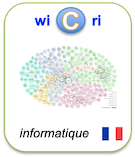How robust are the deviations in haptic parallelity?
Identifieur interne : 001268 ( PubMed/Checkpoint ); précédent : 001267; suivant : 001269How robust are the deviations in haptic parallelity?
Auteurs : Astrid M L. Kappers [Pays-Bas] ; Albert Postma ; Roderik F. ViergeverSource :
- Acta psychologica [ 0001-6918 ] ; 2008.
English descriptors
- KwdEn :
- MESH :
Abstract
Several studies have shown that physically parallel bars do not feel parallel and vice versa. The most plausible cause of this deviation is the biasing influence of an egocentric reference frame. The aim of the present study was to assess the strength of this egocentric contribution. The deviations from veridicality were measured in six experiments where subjects were presented with either haptic or visual information about parallelity or their deviations. It was found that even direct error feedback (either haptically or visually) did not even nearly result in veridical performance. The improvements found were attributed to a shift in focus towards a more allocentric reference frame, possibly reflecting the same mechanisms as found in delay and noninformative vision studies. We conclude that the illusionary percept of haptic parallelity is rather robust and is indeed caused by a strong reliance on an egocentric reference frame.
DOI: 10.1016/j.actpsy.2007.09.006
PubMed: 18021751
Affiliations:
Links toward previous steps (curation, corpus...)
Links to Exploration step
pubmed:18021751Le document en format XML
<record><TEI><teiHeader><fileDesc><titleStmt><title xml:lang="en">How robust are the deviations in haptic parallelity?</title><author><name sortKey="Kappers, Astrid M L" sort="Kappers, Astrid M L" uniqKey="Kappers A" first="Astrid M L" last="Kappers">Astrid M L. Kappers</name><affiliation wicri:level="1"><nlm:affiliation>Helmholtz Instituut, Physics of Man, Princetonplein 5, 3584 CC Utrecht, The Netherlands. a.m.l.kappers@phys.uu.nl</nlm:affiliation><country xml:lang="fr">Pays-Bas</country><wicri:regionArea>Helmholtz Instituut, Physics of Man, Princetonplein 5, 3584 CC Utrecht</wicri:regionArea><wicri:noRegion>3584 CC Utrecht</wicri:noRegion></affiliation></author><author><name sortKey="Postma, Albert" sort="Postma, Albert" uniqKey="Postma A" first="Albert" last="Postma">Albert Postma</name></author><author><name sortKey="Viergever, Roderik F" sort="Viergever, Roderik F" uniqKey="Viergever R" first="Roderik F" last="Viergever">Roderik F. Viergever</name></author></titleStmt><publicationStmt><idno type="wicri:source">PubMed</idno><date when="2008">2008</date><idno type="doi">10.1016/j.actpsy.2007.09.006</idno><idno type="RBID">pubmed:18021751</idno><idno type="pmid">18021751</idno><idno type="wicri:Area/PubMed/Corpus">001546</idno><idno type="wicri:Area/PubMed/Curation">001546</idno><idno type="wicri:Area/PubMed/Checkpoint">001268</idno></publicationStmt><sourceDesc><biblStruct><analytic><title xml:lang="en">How robust are the deviations in haptic parallelity?</title><author><name sortKey="Kappers, Astrid M L" sort="Kappers, Astrid M L" uniqKey="Kappers A" first="Astrid M L" last="Kappers">Astrid M L. Kappers</name><affiliation wicri:level="1"><nlm:affiliation>Helmholtz Instituut, Physics of Man, Princetonplein 5, 3584 CC Utrecht, The Netherlands. a.m.l.kappers@phys.uu.nl</nlm:affiliation><country xml:lang="fr">Pays-Bas</country><wicri:regionArea>Helmholtz Instituut, Physics of Man, Princetonplein 5, 3584 CC Utrecht</wicri:regionArea><wicri:noRegion>3584 CC Utrecht</wicri:noRegion></affiliation></author><author><name sortKey="Postma, Albert" sort="Postma, Albert" uniqKey="Postma A" first="Albert" last="Postma">Albert Postma</name></author><author><name sortKey="Viergever, Roderik F" sort="Viergever, Roderik F" uniqKey="Viergever R" first="Roderik F" last="Viergever">Roderik F. Viergever</name></author></analytic><series><title level="j">Acta psychologica</title><idno type="ISSN">0001-6918</idno><imprint><date when="2008" type="published">2008</date></imprint></series></biblStruct></sourceDesc></fileDesc><profileDesc><textClass><keywords scheme="KwdEn" xml:lang="en"><term>Adolescent</term><term>Adult</term><term>Analysis of Variance</term><term>Cues</term><term>Female</term><term>Functional Laterality</term><term>Humans</term><term>Knowledge of Results (Psychology)</term><term>Male</term><term>Middle Aged</term><term>Optical Illusions</term><term>Orientation</term><term>Practice (Psychology)</term><term>Space Perception</term><term>Visual Perception</term></keywords><keywords scheme="MESH" xml:lang="en"><term>Adolescent</term><term>Adult</term><term>Analysis of Variance</term><term>Cues</term><term>Female</term><term>Functional Laterality</term><term>Humans</term><term>Knowledge of Results (Psychology)</term><term>Male</term><term>Middle Aged</term><term>Optical Illusions</term><term>Orientation</term><term>Practice (Psychology)</term><term>Space Perception</term><term>Visual Perception</term></keywords></textClass></profileDesc></teiHeader><front><div type="abstract" xml:lang="en">Several studies have shown that physically parallel bars do not feel parallel and vice versa. The most plausible cause of this deviation is the biasing influence of an egocentric reference frame. The aim of the present study was to assess the strength of this egocentric contribution. The deviations from veridicality were measured in six experiments where subjects were presented with either haptic or visual information about parallelity or their deviations. It was found that even direct error feedback (either haptically or visually) did not even nearly result in veridical performance. The improvements found were attributed to a shift in focus towards a more allocentric reference frame, possibly reflecting the same mechanisms as found in delay and noninformative vision studies. We conclude that the illusionary percept of haptic parallelity is rather robust and is indeed caused by a strong reliance on an egocentric reference frame.</div></front></TEI><pubmed><MedlineCitation Owner="NLM" Status="MEDLINE"><PMID Version="1">18021751</PMID><DateCreated><Year>2008</Year><Month>04</Month><Day>21</Day></DateCreated><DateCompleted><Year>2008</Year><Month>08</Month><Day>29</Day></DateCompleted><Article PubModel="Print-Electronic"><Journal><ISSN IssnType="Print">0001-6918</ISSN><JournalIssue CitedMedium="Print"><Volume>128</Volume><Issue>1</Issue><PubDate><Year>2008</Year><Month>May</Month></PubDate></JournalIssue><Title>Acta psychologica</Title><ISOAbbreviation>Acta Psychol (Amst)</ISOAbbreviation></Journal><ArticleTitle>How robust are the deviations in haptic parallelity?</ArticleTitle><Pagination><MedlinePgn>15-24</MedlinePgn></Pagination><Abstract><AbstractText>Several studies have shown that physically parallel bars do not feel parallel and vice versa. The most plausible cause of this deviation is the biasing influence of an egocentric reference frame. The aim of the present study was to assess the strength of this egocentric contribution. The deviations from veridicality were measured in six experiments where subjects were presented with either haptic or visual information about parallelity or their deviations. It was found that even direct error feedback (either haptically or visually) did not even nearly result in veridical performance. The improvements found were attributed to a shift in focus towards a more allocentric reference frame, possibly reflecting the same mechanisms as found in delay and noninformative vision studies. We conclude that the illusionary percept of haptic parallelity is rather robust and is indeed caused by a strong reliance on an egocentric reference frame.</AbstractText></Abstract><AuthorList CompleteYN="Y"><Author ValidYN="Y"><LastName>Kappers</LastName><ForeName>Astrid M L</ForeName><Initials>AM</Initials><AffiliationInfo><Affiliation>Helmholtz Instituut, Physics of Man, Princetonplein 5, 3584 CC Utrecht, The Netherlands. a.m.l.kappers@phys.uu.nl</Affiliation></AffiliationInfo></Author><Author ValidYN="Y"><LastName>Postma</LastName><ForeName>Albert</ForeName><Initials>A</Initials></Author><Author ValidYN="Y"><LastName>Viergever</LastName><ForeName>Roderik F</ForeName><Initials>RF</Initials></Author></AuthorList><Language>eng</Language><PublicationTypeList><PublicationType UI="D016428">Journal Article</PublicationType><PublicationType UI="D016449">Randomized Controlled Trial</PublicationType><PublicationType UI="D013485">Research Support, Non-U.S. Gov't</PublicationType></PublicationTypeList><ArticleDate DateType="Electronic"><Year>2007</Year><Month>11</Month><Day>19</Day></ArticleDate></Article><MedlineJournalInfo><Country>Netherlands</Country><MedlineTA>Acta Psychol (Amst)</MedlineTA><NlmUniqueID>0370366</NlmUniqueID><ISSNLinking>0001-6918</ISSNLinking></MedlineJournalInfo><CitationSubset>IM</CitationSubset><MeshHeadingList><MeshHeading><DescriptorName MajorTopicYN="N" UI="D000293">Adolescent</DescriptorName></MeshHeading><MeshHeading><DescriptorName MajorTopicYN="N" UI="D000328">Adult</DescriptorName></MeshHeading><MeshHeading><DescriptorName MajorTopicYN="N" UI="D000704">Analysis of Variance</DescriptorName></MeshHeading><MeshHeading><DescriptorName MajorTopicYN="Y" UI="D003463">Cues</DescriptorName></MeshHeading><MeshHeading><DescriptorName MajorTopicYN="N" UI="D005260">Female</DescriptorName></MeshHeading><MeshHeading><DescriptorName MajorTopicYN="N" UI="D007839">Functional Laterality</DescriptorName></MeshHeading><MeshHeading><DescriptorName MajorTopicYN="N" UI="D006801">Humans</DescriptorName></MeshHeading><MeshHeading><DescriptorName MajorTopicYN="N" UI="D007721">Knowledge of Results (Psychology)</DescriptorName></MeshHeading><MeshHeading><DescriptorName MajorTopicYN="N" UI="D008297">Male</DescriptorName></MeshHeading><MeshHeading><DescriptorName MajorTopicYN="N" UI="D008875">Middle Aged</DescriptorName></MeshHeading><MeshHeading><DescriptorName MajorTopicYN="Y" UI="D009903">Optical Illusions</DescriptorName></MeshHeading><MeshHeading><DescriptorName MajorTopicYN="Y" UI="D009949">Orientation</DescriptorName></MeshHeading><MeshHeading><DescriptorName MajorTopicYN="N" UI="D011214">Practice (Psychology)</DescriptorName></MeshHeading><MeshHeading><DescriptorName MajorTopicYN="Y" UI="D013028">Space Perception</DescriptorName></MeshHeading><MeshHeading><DescriptorName MajorTopicYN="N" UI="D014796">Visual Perception</DescriptorName></MeshHeading></MeshHeadingList></MedlineCitation><PubmedData><History><PubMedPubDate PubStatus="received"><Year>2006</Year><Month>7</Month><Day>25</Day></PubMedPubDate><PubMedPubDate PubStatus="revised"><Year>2007</Year><Month>9</Month><Day>18</Day></PubMedPubDate><PubMedPubDate PubStatus="accepted"><Year>2007</Year><Month>9</Month><Day>19</Day></PubMedPubDate><PubMedPubDate PubStatus="aheadofprint"><Year>2007</Year><Month>11</Month><Day>19</Day></PubMedPubDate><PubMedPubDate PubStatus="pubmed"><Year>2007</Year><Month>11</Month><Day>21</Day><Hour>9</Hour><Minute>0</Minute></PubMedPubDate><PubMedPubDate PubStatus="medline"><Year>2008</Year><Month>8</Month><Day>30</Day><Hour>9</Hour><Minute>0</Minute></PubMedPubDate><PubMedPubDate PubStatus="entrez"><Year>2007</Year><Month>11</Month><Day>21</Day><Hour>9</Hour><Minute>0</Minute></PubMedPubDate></History><PublicationStatus>ppublish</PublicationStatus><ArticleIdList><ArticleId IdType="pii">S0001-6918(07)00107-2</ArticleId><ArticleId IdType="doi">10.1016/j.actpsy.2007.09.006</ArticleId><ArticleId IdType="pubmed">18021751</ArticleId></ArticleIdList></PubmedData></pubmed><affiliations><list><country><li>Pays-Bas</li></country></list><tree><noCountry><name sortKey="Postma, Albert" sort="Postma, Albert" uniqKey="Postma A" first="Albert" last="Postma">Albert Postma</name><name sortKey="Viergever, Roderik F" sort="Viergever, Roderik F" uniqKey="Viergever R" first="Roderik F" last="Viergever">Roderik F. Viergever</name></noCountry><country name="Pays-Bas"><noRegion><name sortKey="Kappers, Astrid M L" sort="Kappers, Astrid M L" uniqKey="Kappers A" first="Astrid M L" last="Kappers">Astrid M L. Kappers</name></noRegion></country></tree></affiliations></record>Pour manipuler ce document sous Unix (Dilib)
EXPLOR_STEP=$WICRI_ROOT/Ticri/CIDE/explor/HapticV1/Data/PubMed/Checkpoint
HfdSelect -h $EXPLOR_STEP/biblio.hfd -nk 001268 | SxmlIndent | more
Ou
HfdSelect -h $EXPLOR_AREA/Data/PubMed/Checkpoint/biblio.hfd -nk 001268 | SxmlIndent | more
Pour mettre un lien sur cette page dans le réseau Wicri
{{Explor lien
|wiki= Ticri/CIDE
|area= HapticV1
|flux= PubMed
|étape= Checkpoint
|type= RBID
|clé= pubmed:18021751
|texte= How robust are the deviations in haptic parallelity?
}}
Pour générer des pages wiki
HfdIndexSelect -h $EXPLOR_AREA/Data/PubMed/Checkpoint/RBID.i -Sk "pubmed:18021751" \
| HfdSelect -Kh $EXPLOR_AREA/Data/PubMed/Checkpoint/biblio.hfd \
| NlmPubMed2Wicri -a HapticV1
|
| This area was generated with Dilib version V0.6.23. | |



